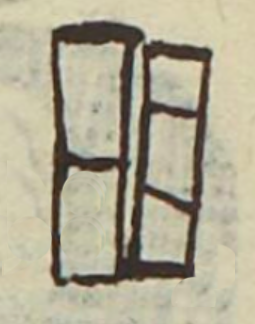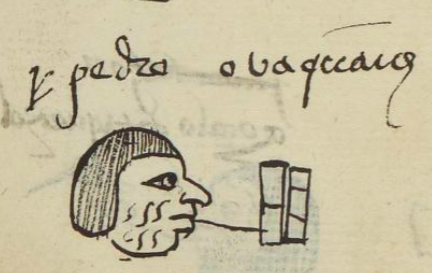Ohuacuauh (MH531r)
This black-line drawing of the compound glyph for the personal name Ohuaquauh ("Green Stalk of Maize" or "Cane," attested here as a man’s name) shows two vertical items, the one on the left looks like a piece of rolled paper and the one on the right, being segmented, seems like a cane. But the gloss suggests that the glyph puts together ohuatl, green maize stalk, and cuahuitl, a piece of wood (which can be a walking stick, for instance).
Stephanie Wood
pedro ovaquauh
Pedro Ohuacuauh
Stephanie Wood
1560
Jeff Haskett-Wood
The wrinkles could be counted, too, and raise the number of elements to three.
tallo, caña de maíz, nombres de hombres

ohua(tl), a stalk of green maize, https://nahuatl.wired-humanities.org/content/ohuatl
cuahui(tl), cane (for walking), https://nahuatl.wired-humanities.org/content/cuahuitl
El Tallo de Maíz, o El Bastón (?)
Stephanie Wood
Matrícula de Huexotzinco, folio 531r, https://www.loc.gov/resource/gdcwdl.wdl_15282/?sp=141
This manuscript is hosted by the Library of Congress and the World Digital Library; used here with the Creative Commons, “Attribution-NonCommercial-ShareAlike 3.0 License” (CC-BY-NC-SAq 3.0).



